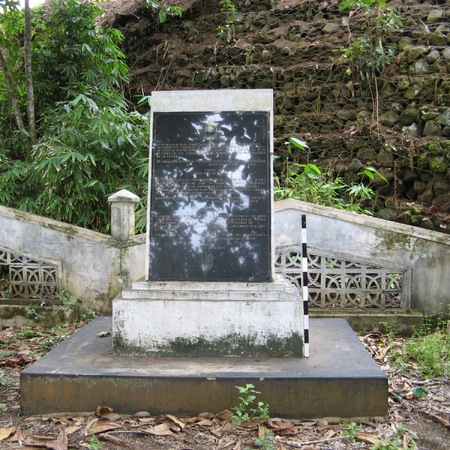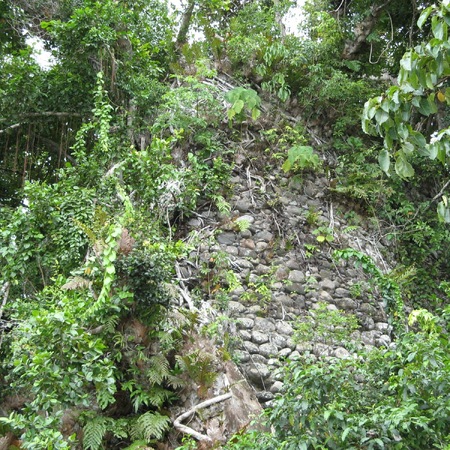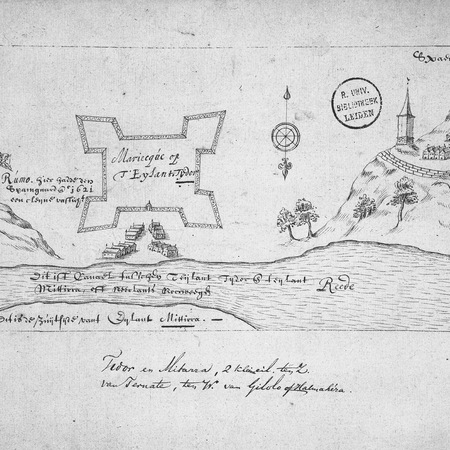It is unknown when the Portuguese built fort Rum (Roemi) on a steep hill on the northwest coast of Tidore Island. In 1605 the Dutch under command of Cornelis Sebastiaansz and their Ternatan allies occupied the fort.
It is unknown how many years the Dutch occupied the fort and when the Spanish seized Rum.
In November 1618 the Sultan of Tidore send a letter to the Spanish governor of Ternate Lucas Vergara Gabiria and asked him to build a fort in Rum to neutralize the Dutch fort Mareku.
The new fort should prevent the Dutch from collecting the cloves that were produced in abundance along the slopes of the island. Fort Rum, which was a terraced structure, was built leaning on a coral wall which made its building process quite difficult, particularly as building materials needed to be transported up the hill. The Dutch attempted an attack against the fort under construction, but did not have any results because the location of the Spanish fort dominated the area.
In 1627 the fort on the hill, which was called Rum, was a square stronghold and equipped with 4 pieces of artillery. On the beach was a half-moon (De Platte Form) with five canons to secure the roadsteads. The location was excellent, because it covered the passage between Tidore and Melayu (fort Orange) on Ternate so that no enemy ship could pass them unnoticed.
In 1663 the Spanish left their forts in the North Moluccas. The Dutch occupied fort Rum but in 1664 the VOC gave the fort to Sultan Saifoeddin who used it as barracks for his Dutch bodyguard.
In the 1930s the fort was still in good condition. In the beginning of this century the main part of the fort was demolished by the construction of the coastal road. Only a small part of the round structure at the edge of the hill next to the sea still exists. Near the fort is a monument to remember the arrival of the Portuguese on Tidore.


